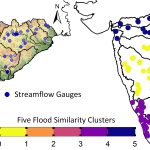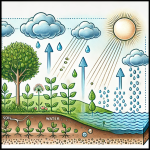
Increased population in urban areas has led to a rise in the number of unplanned cities, and an increased vulnerability to extreme weather events. Examining historical patterns in precipitation and temperature can help predict future climate change, and develop strategies to tackle natural disasters.
Researchers from the Interdisciplinary Centre for Water Research at IISc and the University of Saskatchewan, Canada, have performed a detailed statistical analysis of changes in temperature and precipitation over 30 years in seven cities. It revealed an increase in yearly average temperature, yet a decrease in diurnal temperature in all the cities. The precipitation depth – the amount of rainfall that can accumulate in a given area – has increased in the recent past for most of the cities, the study found. The team also showed that short-duration precipitation events have become more frequent recently, and that overall, the precipitation depth has increased considerably in the evenings.
Understanding the impact of urbanisation on local rainfall patterns can help to design stable infrastructure in cities, and aid in risk assessment and efficient operation of infrastructure particularly during calamities like flooding.






